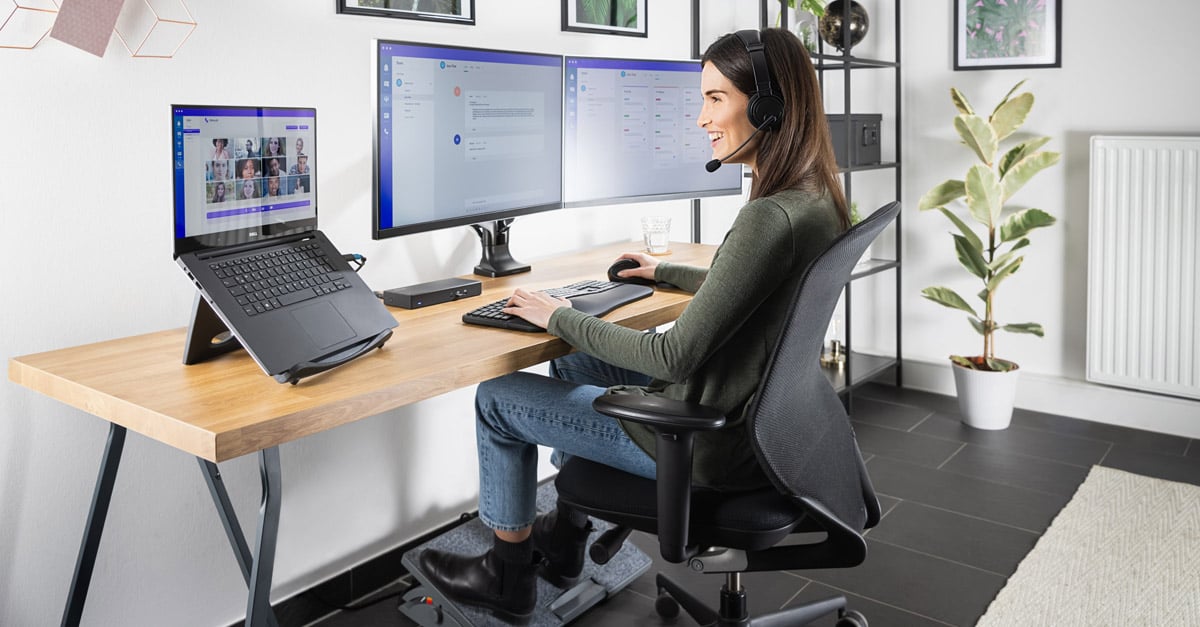
In a survey conducted by Forsa in the spring of 2021, 36% of respondents stated that back pain or headaches had occurred due to poor ergonomic workplace equipment. In addition, not many dining tables possess a height-adjustable and, thus, ergonomic table top. The kitchen chair is also usually not designed to be used for several hours at a time for example, it has no supportive section in the lumbar region and often no armrests. In addition, the mouse and keyboard should be external, i.e., separate from the screen, to support an ergonomic posture.

According to the German Social Accident Insurance (DGUV), the distance between the eyes and the screen should ideally be 50–70 cm, while attention should also be paid to suitable light incidence. Likewise, the screens of mobile devices are generally many times smaller than ergonomic monitors.

Furthermore, the laptop is usually not aligned according to ergonomic guidelines, but is simply placed on the table top or on the lap.

Thus, many employees are now forced to perform their work at the kitchen table or on the couch, amongst other places. Even before the pandemic, only 7% of home office workers had ergonomic work equipment, according to Janneck et al. Previously, only 4% of workers regularly worked in a home office, however, during the first lockdown, this proportion increased to 27% in Germany. However, this was accompanied with the fact that the equipment of home offices may not meet the same ergonomic standards as those of the office workplace. In the wake of the SARS-CoV-2 pandemic, employees worldwide shifted their workplaces from the office to their homes, in order to reduce the risk of infection and to protect their health. Since work-related musculoskeletal complaints of the upper extremities are common among office workers, the use of an ergonomically optimized workstation for home use is recommended based on the results. The results indicate minor differences in the upper extremities in favor of the ergonomically optimized workstation. This study is the first study to compare the ergonomic risk between an ergonomically optimized workplace and a home office workstation. In contrast, the left wrist ( p = 0.025) showed a significantly reduced ergonomic risk value for the home office workstation.

Significantly reduced risk values for both shoulders (left: p < 0.001 right: p = 0.02) were found for the ergonomically optimized workstations. The subjects were investigated using a combined application of a motion capture kinematic analysis and the rapid upper limb assessment (RULA) in order to identify differences in the ergonomic risk. Methodsįor this purpose, 20 subjects (13w/7m) aged 18–31 years each performed a 20-minute workplace simulation (10 min writing a text, 10 min editing a questionnaire) in the following set up: on a dining table with dining chair and laptop (home office) and on an ergonomically adjusted workstation (ergonomically optimized workplace). The aim of this study was to compare the ergonomic risk in the upper extremities and trunk of working in a home office with that of working in an ergonomically optimized workplace. The first surveys concerning this shift indicate an increase in musculoskeletal complaints of many employees. In order to reduce the risk of infection with Sars-Cov-2, work practices have been shifted to the home office in many industries.


 0 kommentar(er)
0 kommentar(er)
